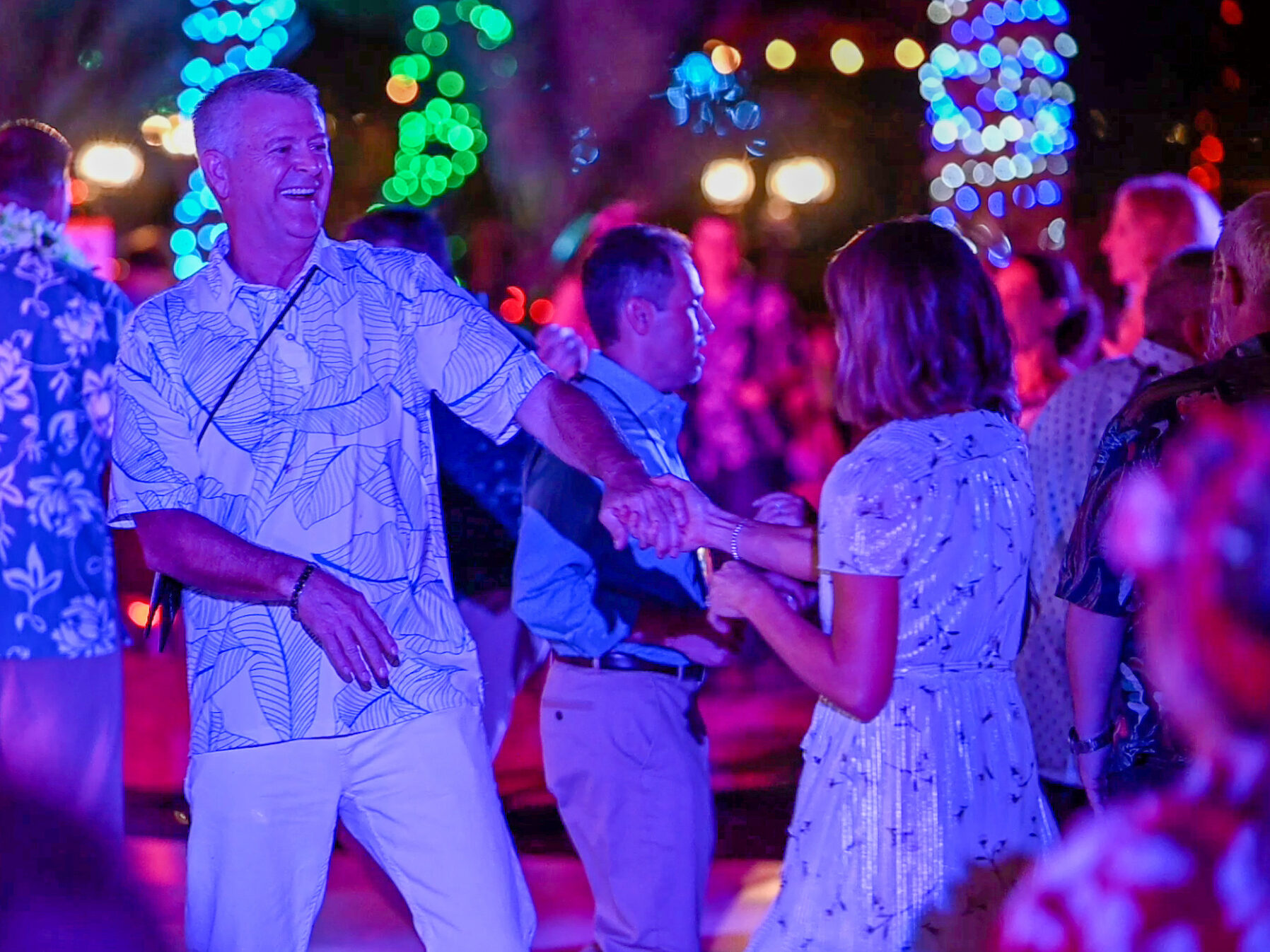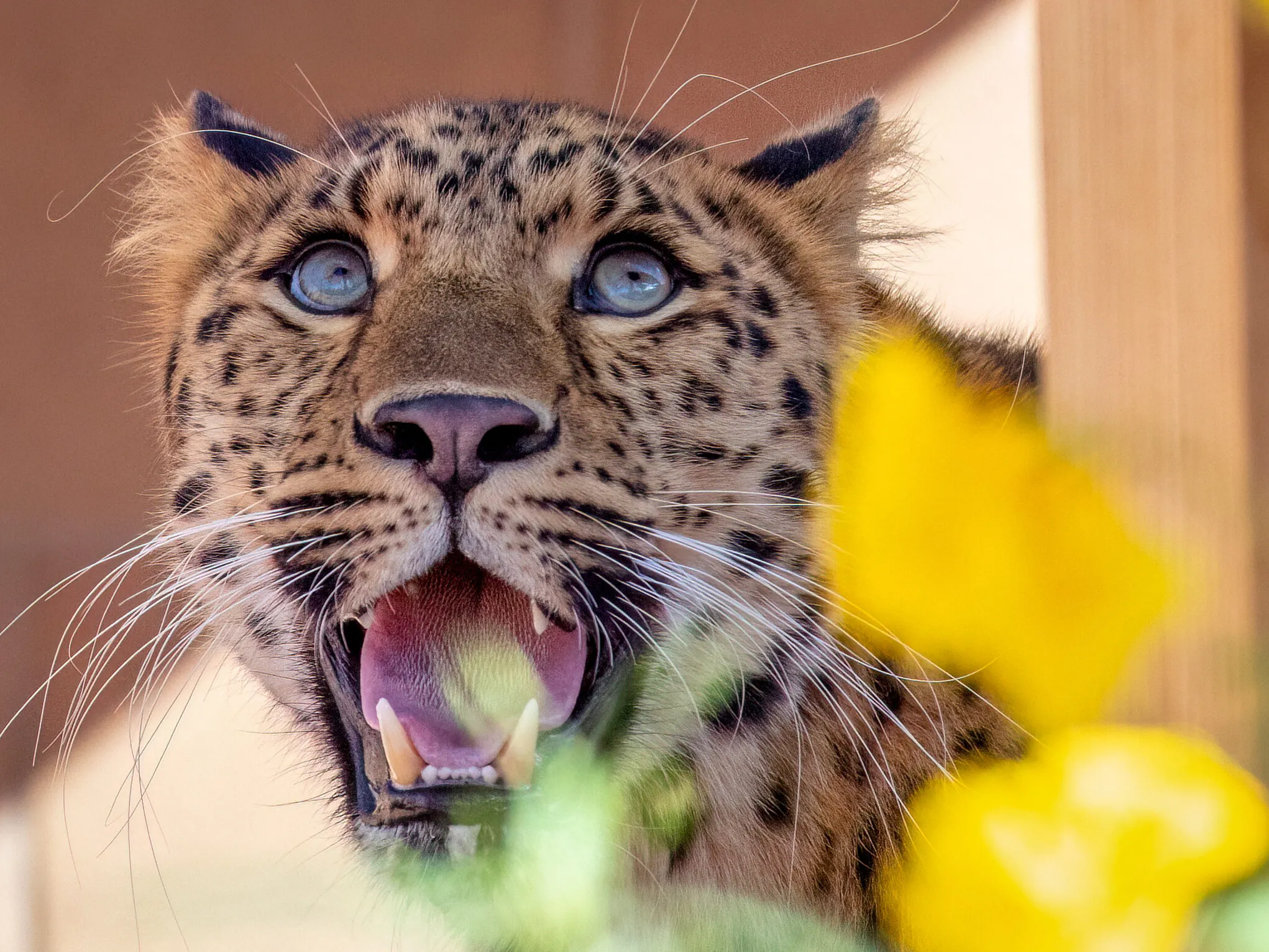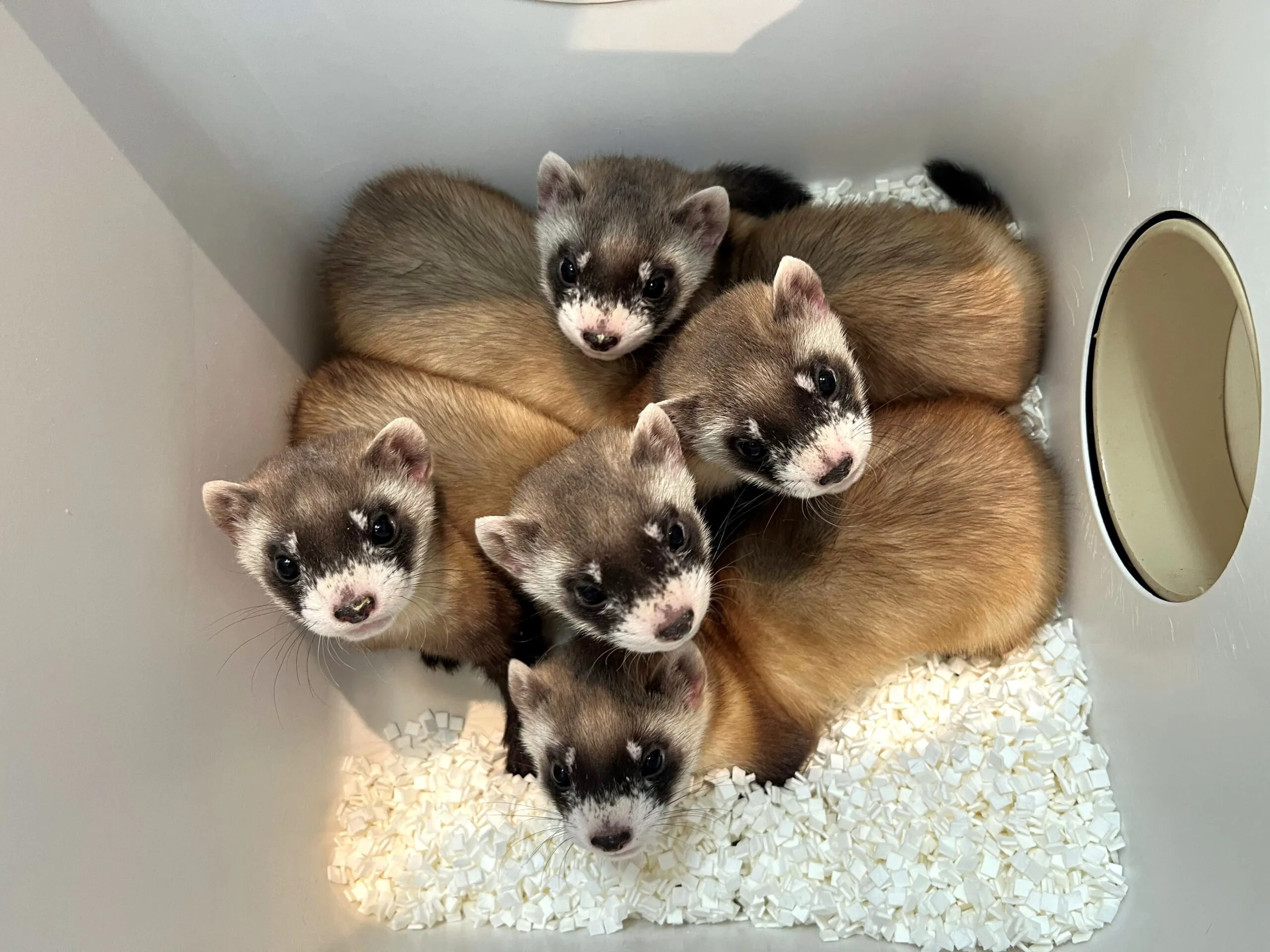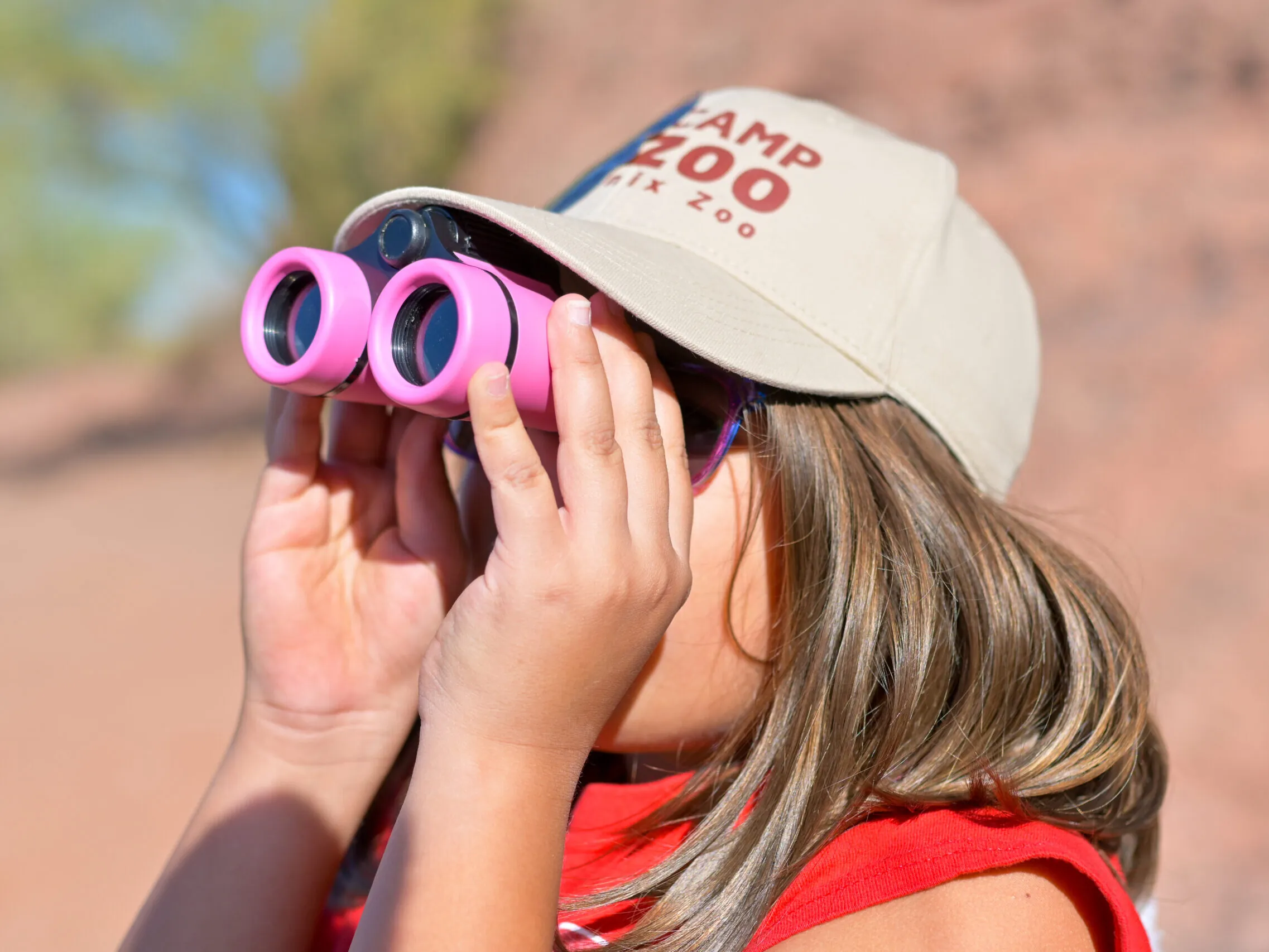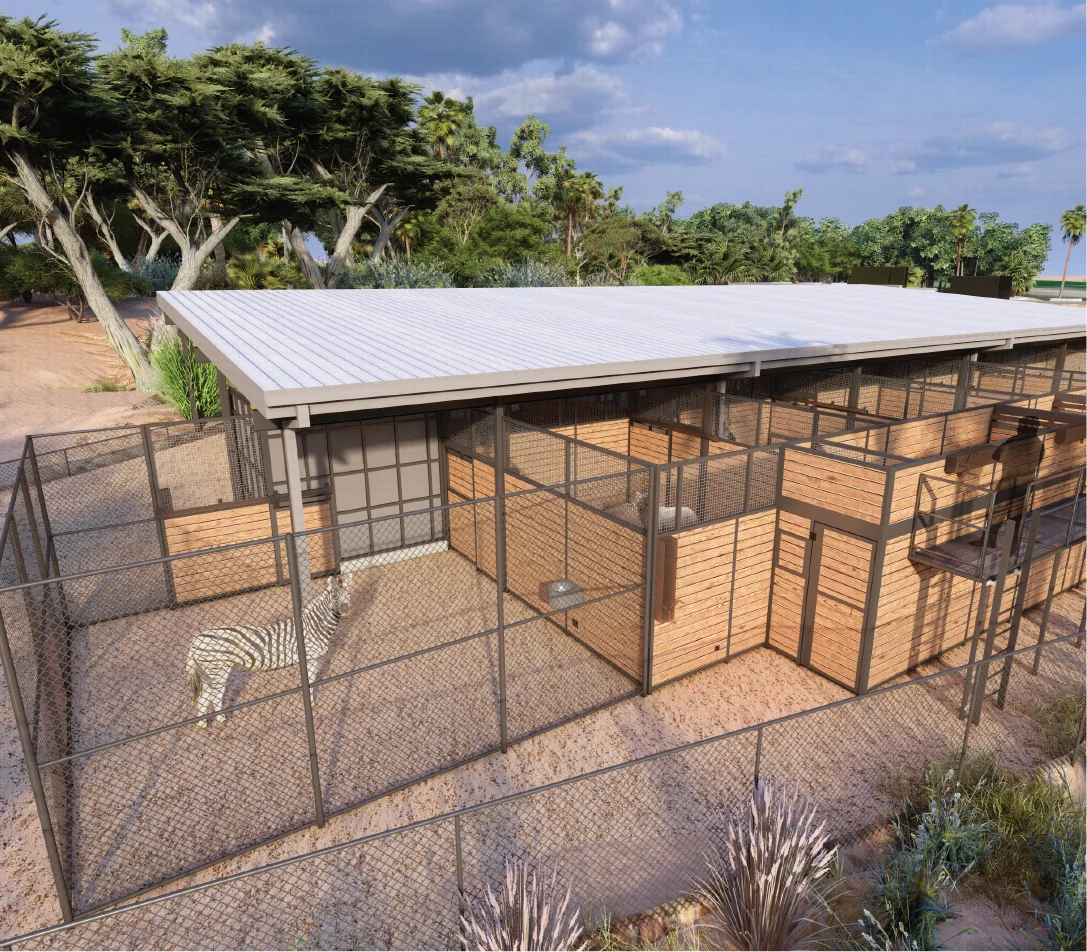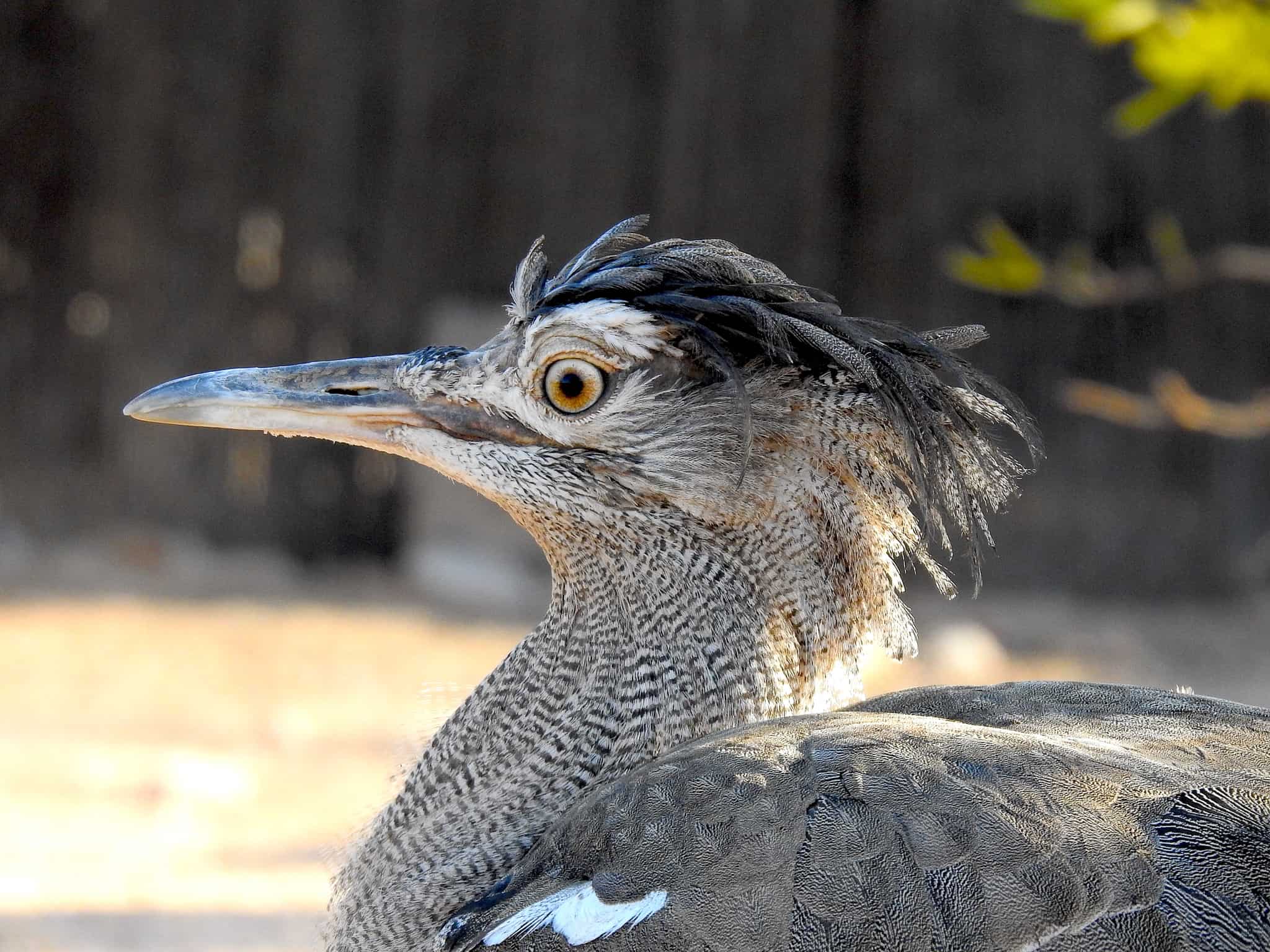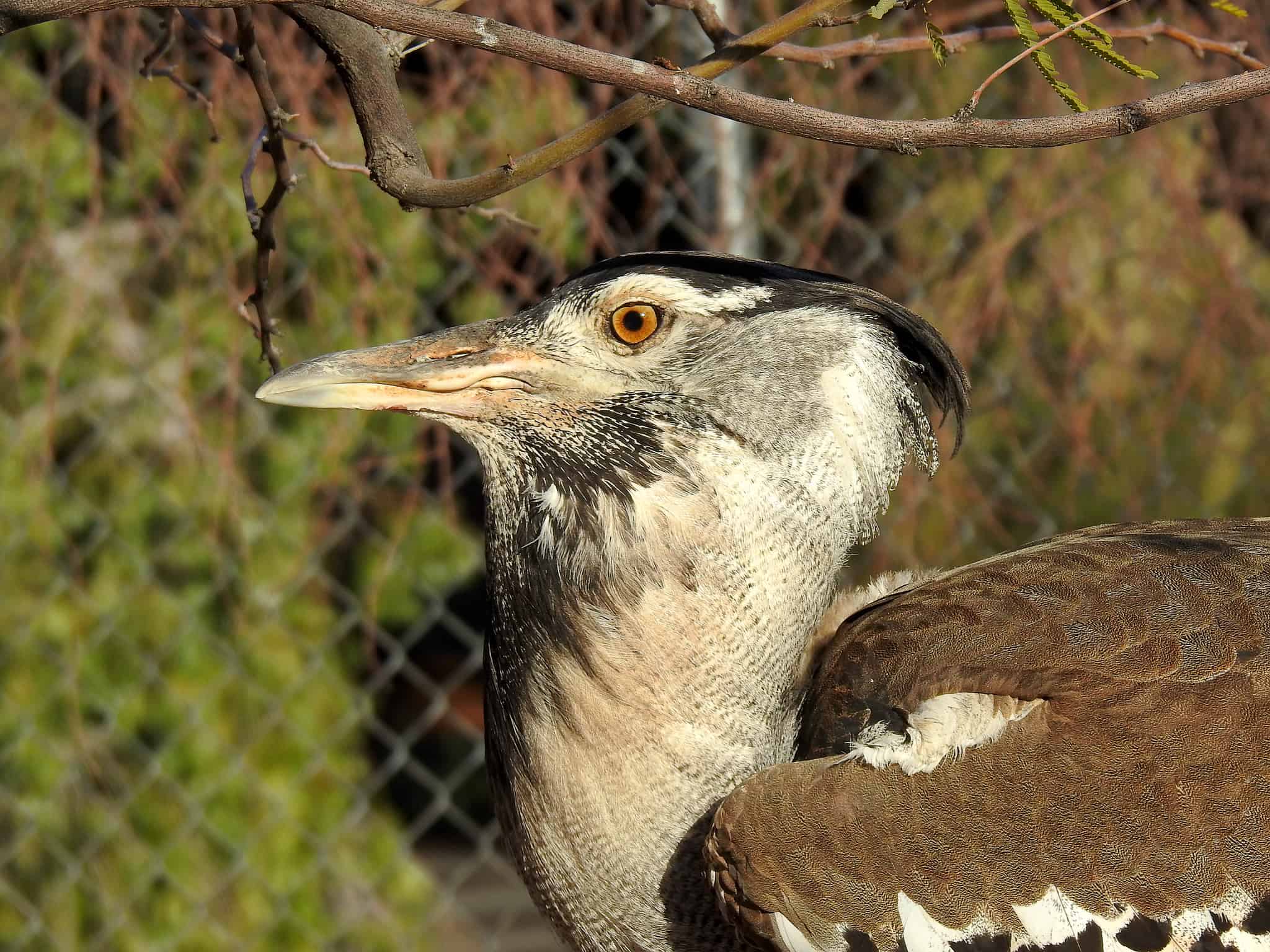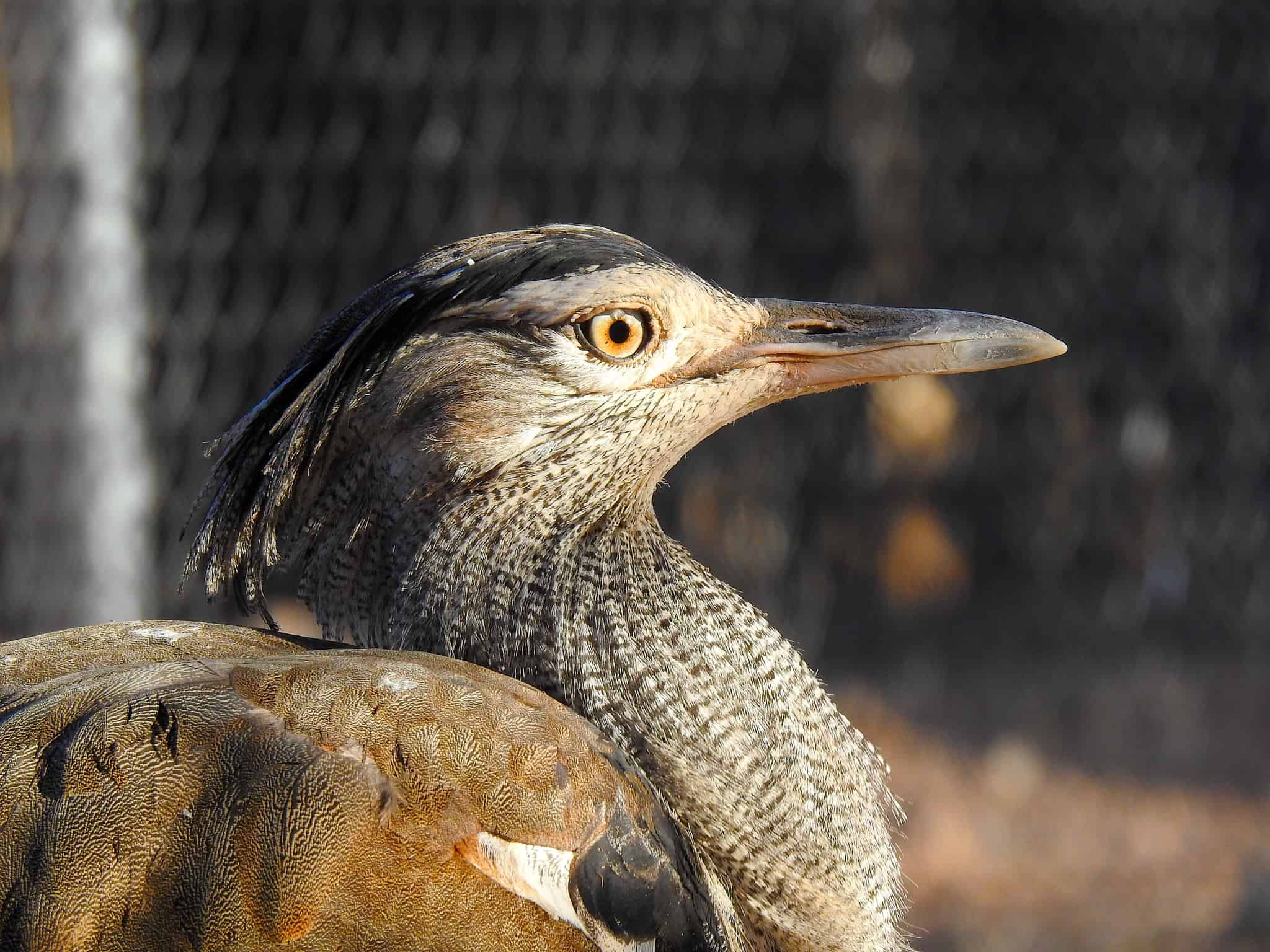Blog
Happy Kori Bustard Day!
March 27 is Kori Bustard Day!
But you may be asking yourself, “What’s a Kori bustard?”
So we caught up with our amazing Bird Keeper, Kyle Waites, for some fun facts!
Kori bustards are the world’s heaviest flying birds (however, they are well-adapted for running, too!). They live in grasslands and savannas in eastern and southern Africa. Male kori bustards range in weight from 24-42 pounds (11-19 kilograms), and females are roughly half the size of the males. They stand about 5 feet (1.5 meters) tall.
During the breeding season, males will gather in loose groups called leks and display to females by inflating their esophagus to nearly 4 times its normal size and will make a low-pitched booming sound!
We have three Kori bustards that live here at the Zoo (pictures below) – one male and two females. Our male is 13 years and 7 months, one female is 12 years and 7 months, and our other female is 11 years and 8 months.
Our male is named Pipe (pronounced pip), our 12-year-old female is named Skwerl, and our 11-year-old female is named Crook.
Pipe is a large Kori Bustard with just as large of a personality. He is an inquisitive bird that enjoys enrichment and is never afraid to let his keepers know his mood. He also loves to strut his stuff during the breeding season to impress the girls. Skwerl is an outgoing little Kori Bustard that is fairly comfortable around her keepers and is a very dedicated mom when sitting on eggs. Crook is a somewhat nervous Kori Bustard that mostly prefers to keep to herself and do her own thing. They are all incredible birds to work with and their individual personalities make it even more enjoyable to take care of them.
Our Kori bustards are housed off exhibit as they need a substantial amount of space and don’t do well with other animals in their space. They can be spotted, however, from the public side behind Gerenuk yard if you look all the way towards the rear of the habitat!
Conservation fact: Kori bustard feathers are highly valued feathers for fly-fishing, and the birds are often hunted for the creation of these lures. A single feather can be valued between two and five hundred dollars, with a bird being worth up to 10,000 dollars. To combat this, the American Association of Zoos and Aquariums partnered with a fly fisherman named John McClain to collect naturally shed feathers from Koris in zoos and offer them for free. This helps reduce the value of Kori Bustard feathers and make hunting them in their native range less profitable.

